

| Cruise Region : Northern Europe |
| Company : Oceania Cruises |
| Ship : Insignia |
| Journey Start : Fri 24 Jul 2026 |
| Journey End : Sat 29 Aug 2026 |
| Count Nights : 36 nights |
| Day | Date | Port | Arrival | Departure |
|---|---|---|---|---|
| 1 | 24.07 Fri | Reykjavik / Iceland | 07:00 | 21:00 |
| 2 | 25.07 Sat | Heimaey Vestmannaeyjar Island | 08:00 | 17:00 |
| 3 | 26.07 Sun | Day at sea / Sea | ||
| 4 | 27.07 Mon | Torshavn / Faroe Islands | 07:00 | 17:00 |
| 5 | 28.07 Tue | Runavík Runavík / Faroe Islands | 07:00 | 16:00 |
| 6 | 29.07 Wed | Djupivogur / Iceland | 10:00 | 20:00 |
| 7 | 30.07 Thu | Eskifjordur / Iceland | 07:00 | 16:00 |
| 8 | 31.07 Fri | Akureyri / Iceland | 10:00 | 19:00 |
| 9 | 1.08 Sat | Isafjordur / Iceland | 09:00 | 19:00 |
| 10 | 2.08 Sun | Grundarfjordur / Iceland | 08:00 | 18:00 |
| 11 | 3.08 Mon | Reykjavik / Iceland | 07:00 | |
| 12 | 4.08 Tue | Reykjavik / Iceland | 10:00 | |
| 13 | 5.08 Wed | Day at sea / Sea | ||
| 14 | 6.08 Thu | Kirkwall / Great Britain | 11:00 | 19:00 |
| 15 | 7.08 Fri | Ullapool / Scotland | 07:00 | 16:00 |
| 16 | 8.08 Sat | Killybegs / Ireland | 10:00 | 18:00 |
| 17 | 9.08 Sun | Galway / Ireland | 08:00 | 19:00 |
| 18 | 10.08 Mon | Foynes, Limerick / Ireland | 07:00 | 19:00 |
| 19 | 11.08 Tue | Dingle / Ireland | 07:00 | 19:00 |
| 20 | 12.08 Wed | Glengarriff / Ireland | 07:00 | 19:00 |
| 21 | 13.08 Thu | Cork / Ireland | 07:00 | 19:00 |
| 22 | 14.08 Fri | Day at sea / Sea | ||
| 23 | 15.08 Sat | London / Great Britain | 07:00 | 17:00 |
| 24 | 16.08 Sun | Day at sea / Sea | ||
| 25 | 17.08 Mon | Day at sea / Sea | ||
| 26 | 18.08 Tue | Rosendal / Norway | 07:00 | 17:00 |
| 27 | 19.08 Wed | Nordfjorden / Norway | 11:00 | 19:00 |
| 28 | 20.08 Thu | Alesund / Norway | 07:00 | |
| 29 | 21.08 Fri | Alesund / Norway | 17:00 | |
| 30 | 22.08 Sat | Molde / Norway | 07:00 | 17:00 |
| 31 | 23.08 Sun | Kristiansand / Norway | 07:00 | 17:00 |
| 32 | 24.08 Mon | Måløy | 07:00 | 16:00 |
| 33 | 25.08 Tue | Stavanger / Norway | 11:00 | 18:00 |
| 34 | 26.08 Wed | Mandal | 07:00 | 16:00 |
| 35 | 27.08 Thu | Copenhagen / Denmark | 10:00 | |
| 36 | 28.08 Fri | Copenhagen / Denmark | 12:00 | |
| 37 | 29.08 Sat | Oslo / Norway | 07:00 | 17:00 |
Your World Included
With Your World Included, you’ll enjoy a wide array of included amenities for the ultimate comfort and value in ultra-premium cruising.
Unforgettable dining experiences at a variety of exquisite restaurants — all at no extra charge.
Complimentary specialty coffees, sodas, freshly pressed juices, and still and sparkling Vero Water® served throughout the ship.
Unlimited free Wi-Fi available in your suite, stateroom, and all public areas.
In-room dining with a superb variety of hot and cold selections.
Smoothies, milkshakes, gelato, and signature Humphry Slocombe ice cream — always included.
Group fitness classes at Aquamar® Spa + Vitality Center are complimentary.
Gratuities are included for your convenience.
Laundry is free for all guests.
With complimentary self-service launderettes on board, plus laundry and pressing services for Concierge and Suite categories, you’ll always look your finest.
Along with our hallmark personalized service, you’ll enjoy an enriching cruise experience with no hidden costs or nickel-and-diming.
Elevate Your Experience
Concierge Level Veranda Staterooms offer an unrivaled combination of luxury, privilege, and value. A wealth of amenities and exclusive benefits elevate your experience to the sublime — from in-room dining selections from The Grand Dining Room and complimentary laundry services to unlimited access to the Aquamar Spa Terrace.
On board Oceania Marina and Oceania Riviera, you’ll also enjoy the services of a dedicated Concierge and exclusive access to the private Concierge Lounge.
Located in the most desired areas of the ship, Concierge Level Veranda Staterooms are far more than just staterooms — they are an experience in themselves.
Concierge Level Veranda — Exclusive Privileges
Expanded in-room dining menu for lunch and dinner from The Grand Dining Room
Laundry service — up to 3 bags per stateroom
Exclusive key-card access to the private Concierge Lounge aboard Oceania Marina, Oceania Riviera, Oceania Vista, and Oceania Allura, featuring complimentary beverages, coffees, snacks, and the services of a dedicated Concierge
Welcome bottle of fine Italian Prosecco
Priority online reservations for specialty restaurants
Unlimited access to the Aquamar Spa Terrace
Oceania Cruises logo tote bag
Cashmere lap blankets — perfect for relaxing or snuggling
Pressing of garments upon embarkation
Complimentary shoeshine service
Deposit and Payments – Oceania Cruises
General Deposit:
For Owner’s, Vista, and Oceania Suites, a deposit of 20% of the cruise fare per person is required.
For all other suite/stateroom categories, the deposit is $500 per person.
For Grand Voyages, the deposit is $1,500 per person.
Deposit and Final Payment Deadlines:
Bookings more than 150 days from sailing:
Deposit 20% for Owner’s, Vista, and Oceania Suites and $500 for all other categories is required within 5 days of booking.
Bookings 90–120 days from sailing:
Full payment required within 3 days of booking.
Bookings 0–90 days from sailing:
Full payment due on the day of booking.
Important:
Bookings that are not deposited or paid in full according to this schedule will be automatically cancelled.
Unless otherwise noted, final payment must be received by Oceania Cruises 150 days prior to departure for cruises less than 15 days, and 150 days for cruises 15 days or longer.
Oceania Cruises reserves the right to cancel any booking not fully paid at the time of final payment.
Additional Information:
Passport details and special onboard service requests are due at final payment.
Payment may be made by personal check, American Express, Discover, MasterCard, or Visa.
For convenience, final payment may be automatically charged to the credit card used for the initial deposit.
Oceania Cruises is not responsible for foreign currency or transaction fees independently charged by issuing banks. These fees do not benefit Oceania Cruises.
Third-party credit card payments are accepted only with valid authorization from the cardholder.
Deposit and Payment – 180-Day Voyages
For 180-day voyages, a deposit of 20% of the cruise fare per person for all suites and staterooms is required within 7 days of booking.
Final payment must be received no later than 181 days prior to departure, along with passport details and any special onboard service requests.
Otherwise, the booking may be immediately cancelled, and applicable penalties will apply.
Oceania Cruises accepts payment for reservations by credit/debit card or bank transfer.
Unfortunately, personal checks are not accepted.
Credit/Debit Cards:
American Express, Visa, and Mastercard are accepted.
Please note: Oceania Cruises assumes no responsibility for foreign currency/transaction processing fees assessed by your issuing bank.
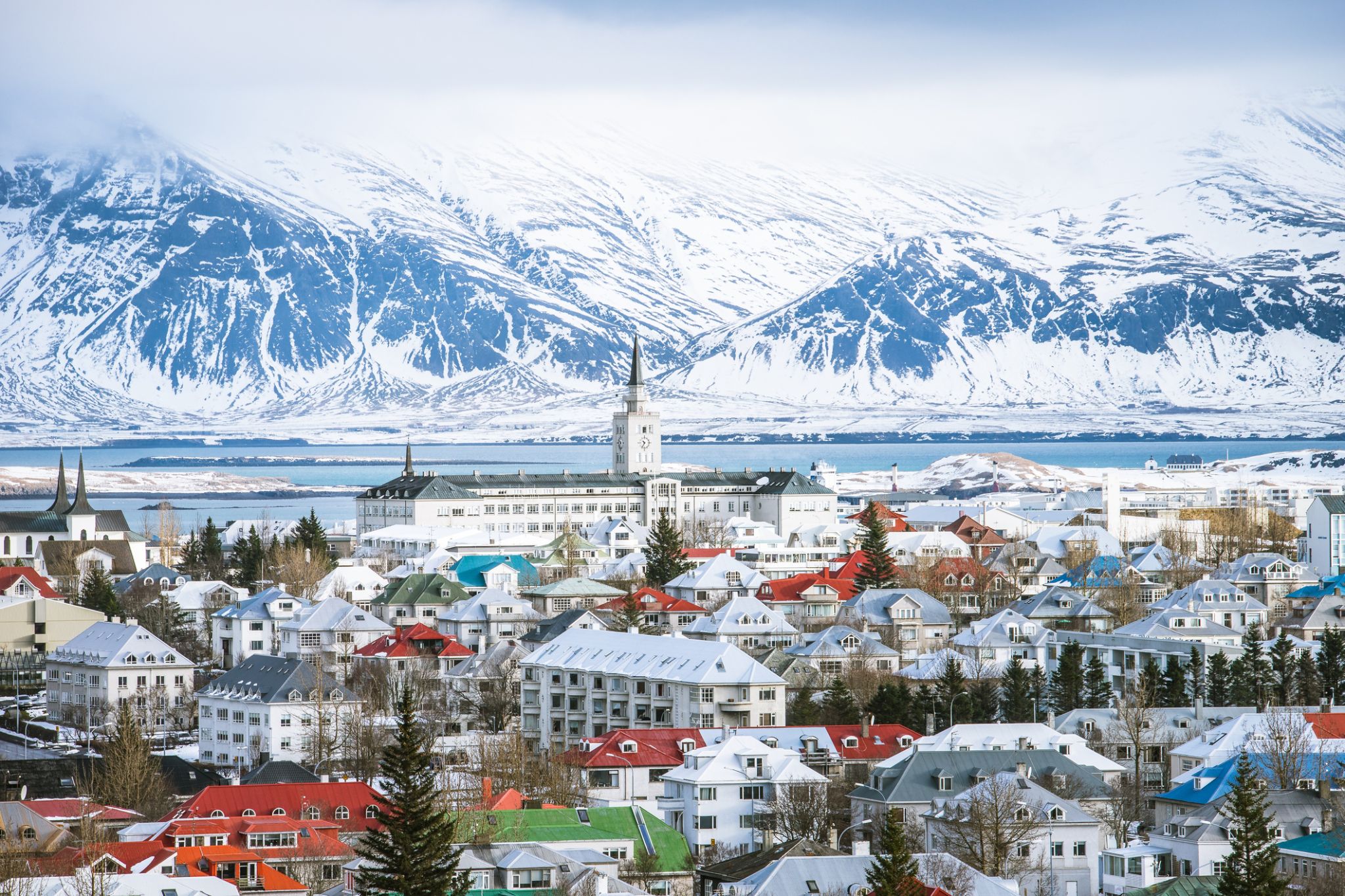
Reykjavík is the capital and largest city of Iceland. It is located in southwestern Iceland, on the southern shore of Faxa Bay. Its latitude is 64°08' N, making it the world's northernmost capital of a sovereign state. With a population of around 123,300 (and over 216,940 in the Capital Region), it is the heart of Iceland's cultural, economic and governmental activity, and is a popular tourist destination.
Reykjavík is believed to be the location of the first permanent settlement in Iceland, which, according to Ingólfr Arnarson, was established in AD 874. Until the 19th century, there was no urban development in the city location. The city was founded in 1786 as an official trading town and grew steadily over the following decades, as it transformed into a regional and later national centre of commerce, population, and governmental activities. It is among the cleanest, greenest, and safest cities in the world.


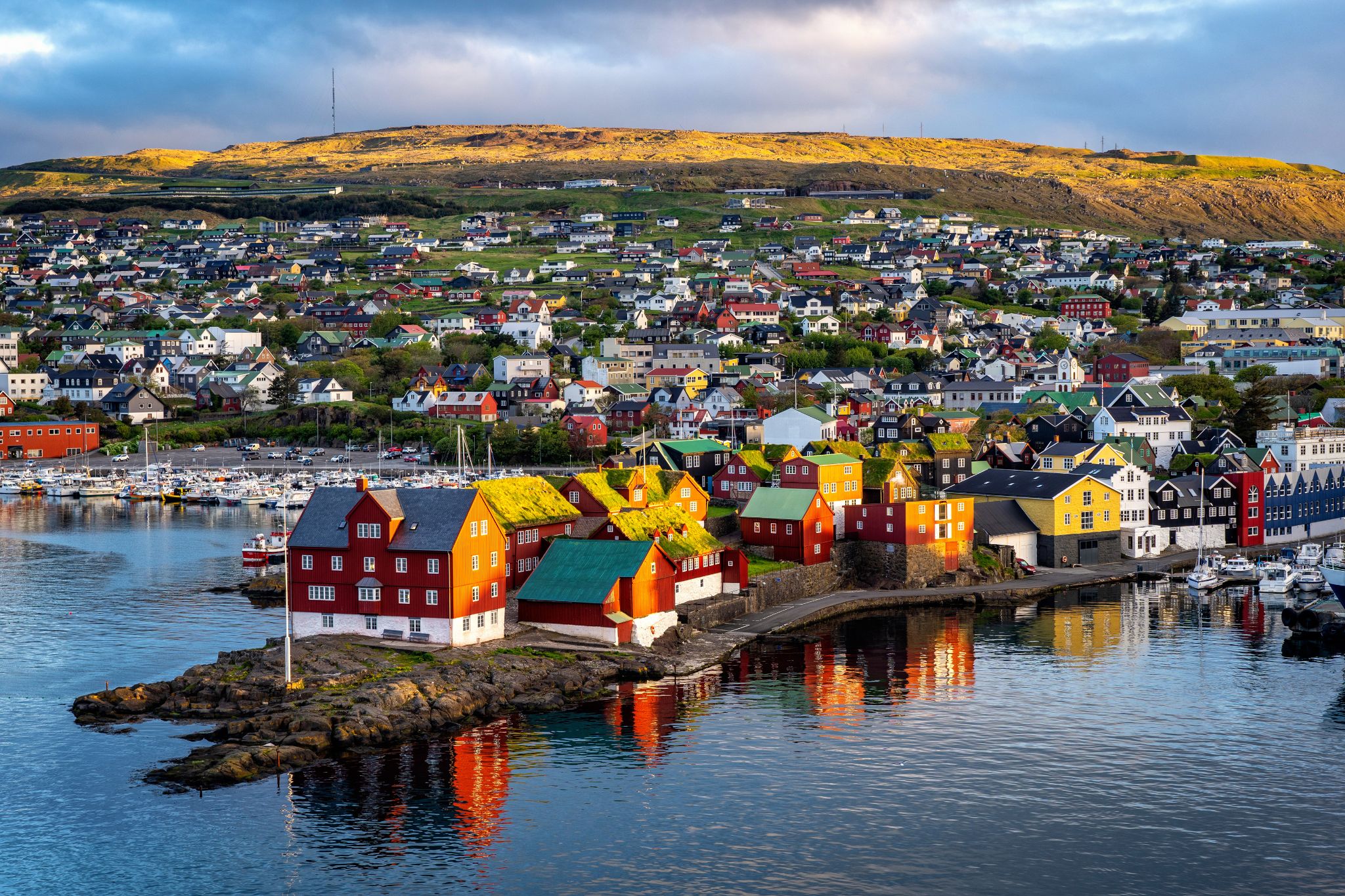
Tórshavn is the capital and largest town of the Faroe Islands. Tórshavn is in the southern part on the east coast of Streymoy. To the northwest of the city lies the 347-meter-high (1,138 ft) mountain Húsareyn, and to the southwest, the 350-meter-high (1,150 ft) Kirkjubøreyn. They are separated by the Sandá River. The town proper has a population of 13,089 (2017), and the greater urban area a population of 21,000.
The Norse established their parliament on the Tinganes peninsula in AD 850.[3] Tórshavn thus became the capital of the Faroe Islands and has remained so ever since. All through the Middle Ages the narrow peninsula jutting out into the sea made up the main part of Tórshavn. Early on, Tórshavn became the centre of the islands' trade monopoly, thereby being the only legal place for the islanders to sell and buy goods. In 1856, the trade monopoly was abolished and the islands were left open to free trade.

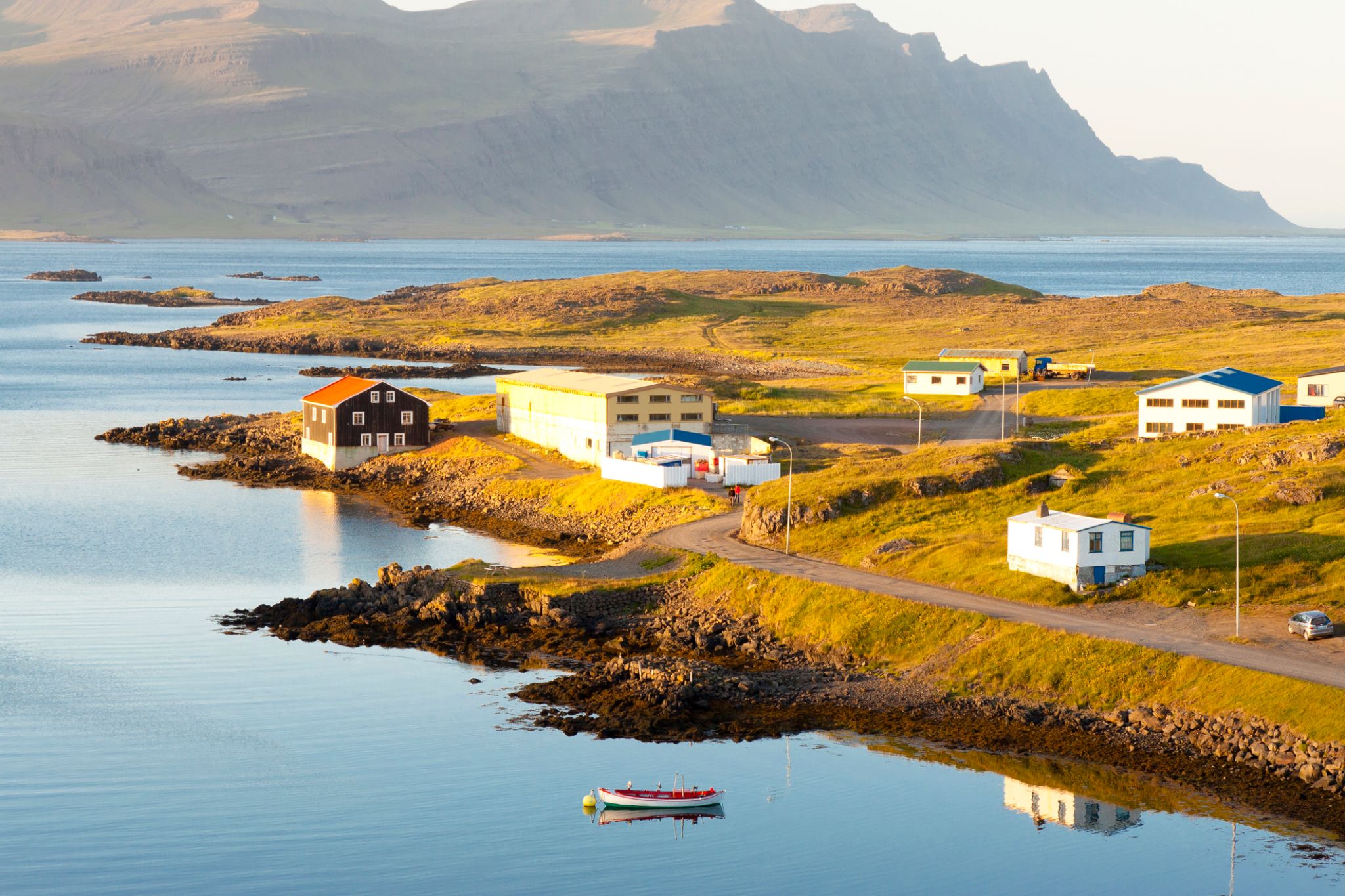

Eskifjordur is a small yet picturesque fjord located in Eastern Iceland, attracting tourists with its natural beauty and peaceful atmosphere. Surrounded by high mountain ranges, Eskifjordur is an ideal destination for those seeking tranquility away from crowded tourist spots. Visitors can enjoy the fresh air and breathtaking views of the fjord, which connects to the Atlantic Ocean. Traditional Icelandic houses with turf roofs add to the charm of this peaceful town.
The town is also known for its cultural heritage and history. Nearby villages offer a glimpse into the traditional lifestyle of the locals, and several interesting museums, including a fishing museum, tell the story of the region's fishing industry. Eskifjordur is also an excellent base for exploring Eastern Iceland, with opportunities for hiking, fishing, and wildlife watching, including local birds and marine mammals.
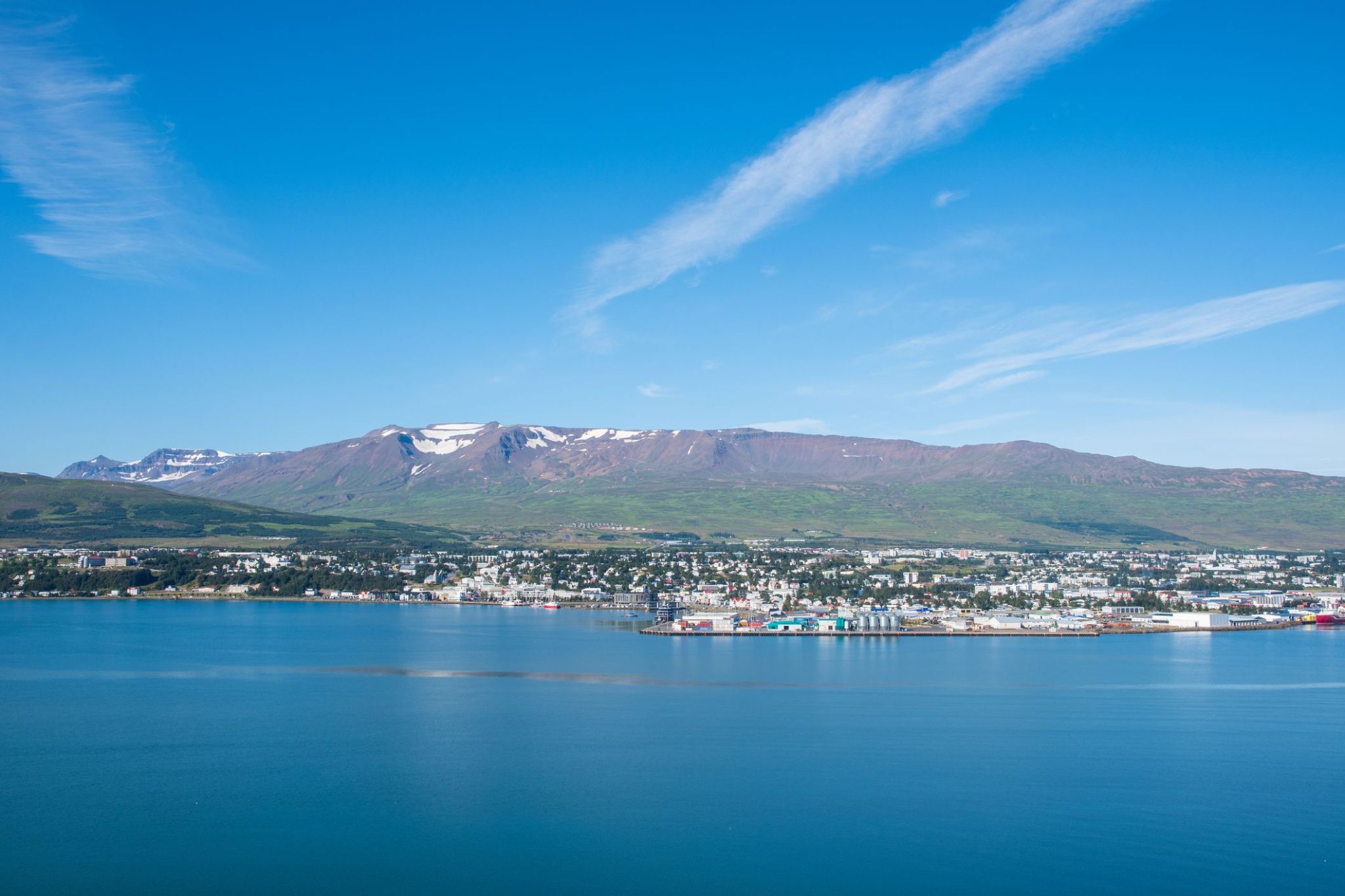
Akureyri is a town in northern Iceland. It is Iceland's Fifth largest municipality.
Nicknamed the Capital of North Iceland, Akureyri is an important port and fishing centre. The area where Akureyri is located was settled in the 9th century but did not receive a municipal charter until 1786. The town was the site of Alliedunits during World War II. Further growth occurred after the war as the Icelandic population increasingly moved to urban areas.
The area has a relatively mild climate because of geographical factors, and the town's ice-free harbour has played a significant role in its history.

Isafjörður, meaning ice fjord or fjord of ice, ice in plural genitive) is a town in the northwest of Iceland.
The oldest part of Ísafjörður with the town centre is located on a spit of sand, or eyri, in Skutulsfjörður, a fjord which meets the waters of the larger fjord Ísafjarðardjúp. With a population of about 2,600, Ísafjörður is the largest settlement in the peninsula of Vestfirðir (Westfjords) and the administration centre of the Ísafjarðarbær municipality, which includes – besides Ísafjörður – the nearby villages of Hnífsdalur, Flateyri, Suðureyri, and Þingeyri.

Grundarfjordur is a picturesque town located on the western coast of Iceland, at the foot of the majestic Kirkjufell mountain. This small settlement attracts tourists with its breathtaking views of the fjord and mountainous landscapes, as well as its unique nature, including numerous waterfalls and geothermal springs. One of the main attractions in the region is the Kirkjufell mountain, which became famous due to its distinctive silhouette and popularity among photographers. Grundarfjordur is an excellent starting point for exploring nearby natural landmarks such as Skaftafell National Park and the Skaftatall Glacier.
For those who enjoy active recreation, Grundarfjordur offers great opportunities for fishing, hiking, and birdwatching. The town also has cozy cafes and restaurants serving fresh seafood and traditional Icelandic dishes. Additionally, Grundarfjordur is located near Iceland's main tourist routes, making it a convenient place to stop on the way to the country's famous natural wonders.

Reykjavík is the capital and largest city of Iceland. It is located in southwestern Iceland, on the southern shore of Faxa Bay. Its latitude is 64°08' N, making it the world's northernmost capital of a sovereign state. With a population of around 123,300 (and over 216,940 in the Capital Region), it is the heart of Iceland's cultural, economic and governmental activity, and is a popular tourist destination.
Reykjavík is believed to be the location of the first permanent settlement in Iceland, which, according to Ingólfr Arnarson, was established in AD 874. Until the 19th century, there was no urban development in the city location. The city was founded in 1786 as an official trading town and grew steadily over the following decades, as it transformed into a regional and later national centre of commerce, population, and governmental activities. It is among the cleanest, greenest, and safest cities in the world.

Reykjavík is the capital and largest city of Iceland. It is located in southwestern Iceland, on the southern shore of Faxa Bay. Its latitude is 64°08' N, making it the world's northernmost capital of a sovereign state. With a population of around 123,300 (and over 216,940 in the Capital Region), it is the heart of Iceland's cultural, economic and governmental activity, and is a popular tourist destination.
Reykjavík is believed to be the location of the first permanent settlement in Iceland, which, according to Ingólfr Arnarson, was established in AD 874. Until the 19th century, there was no urban development in the city location. The city was founded in 1786 as an official trading town and grew steadily over the following decades, as it transformed into a regional and later national centre of commerce, population, and governmental activities. It is among the cleanest, greenest, and safest cities in the world.

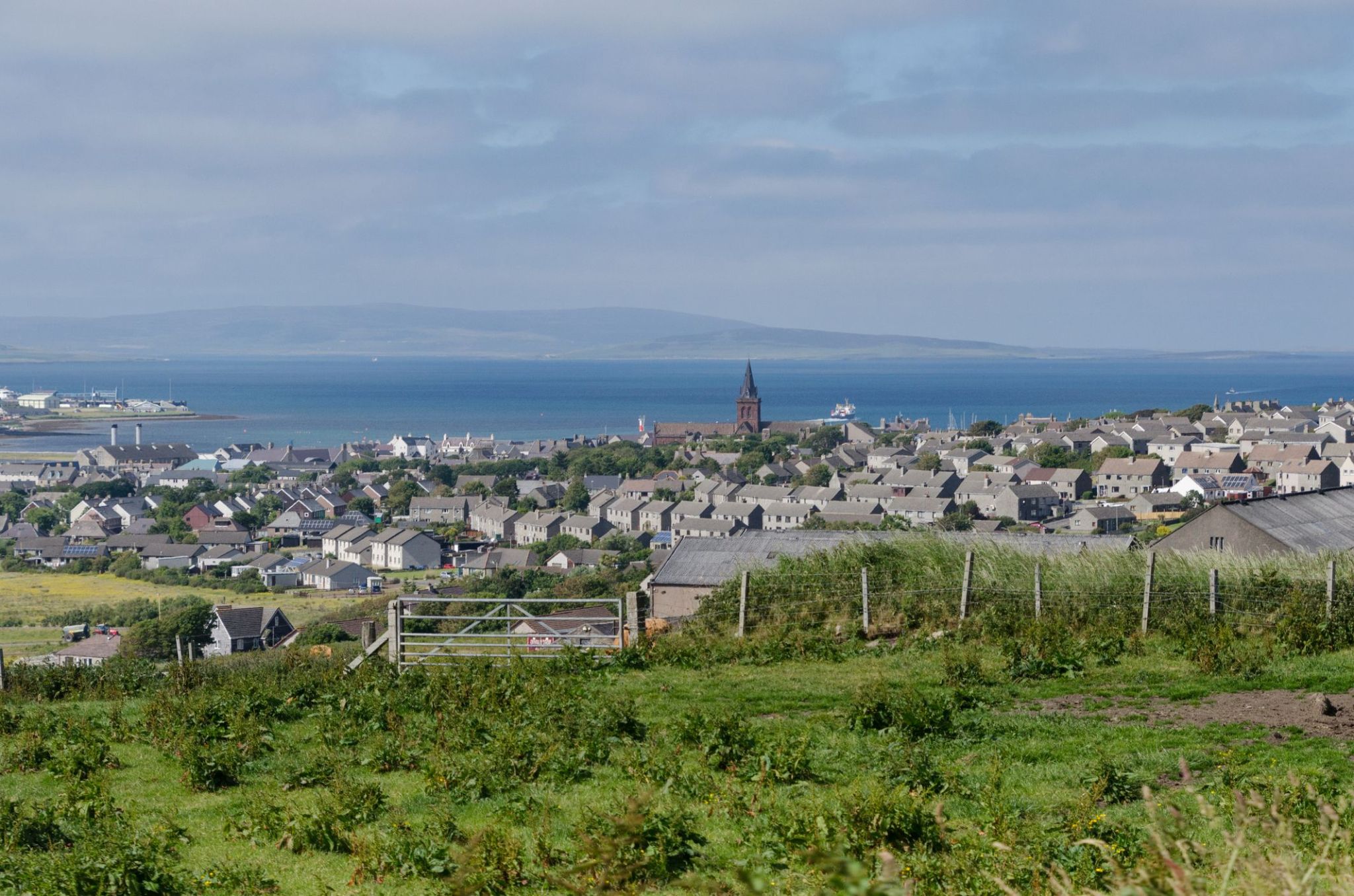
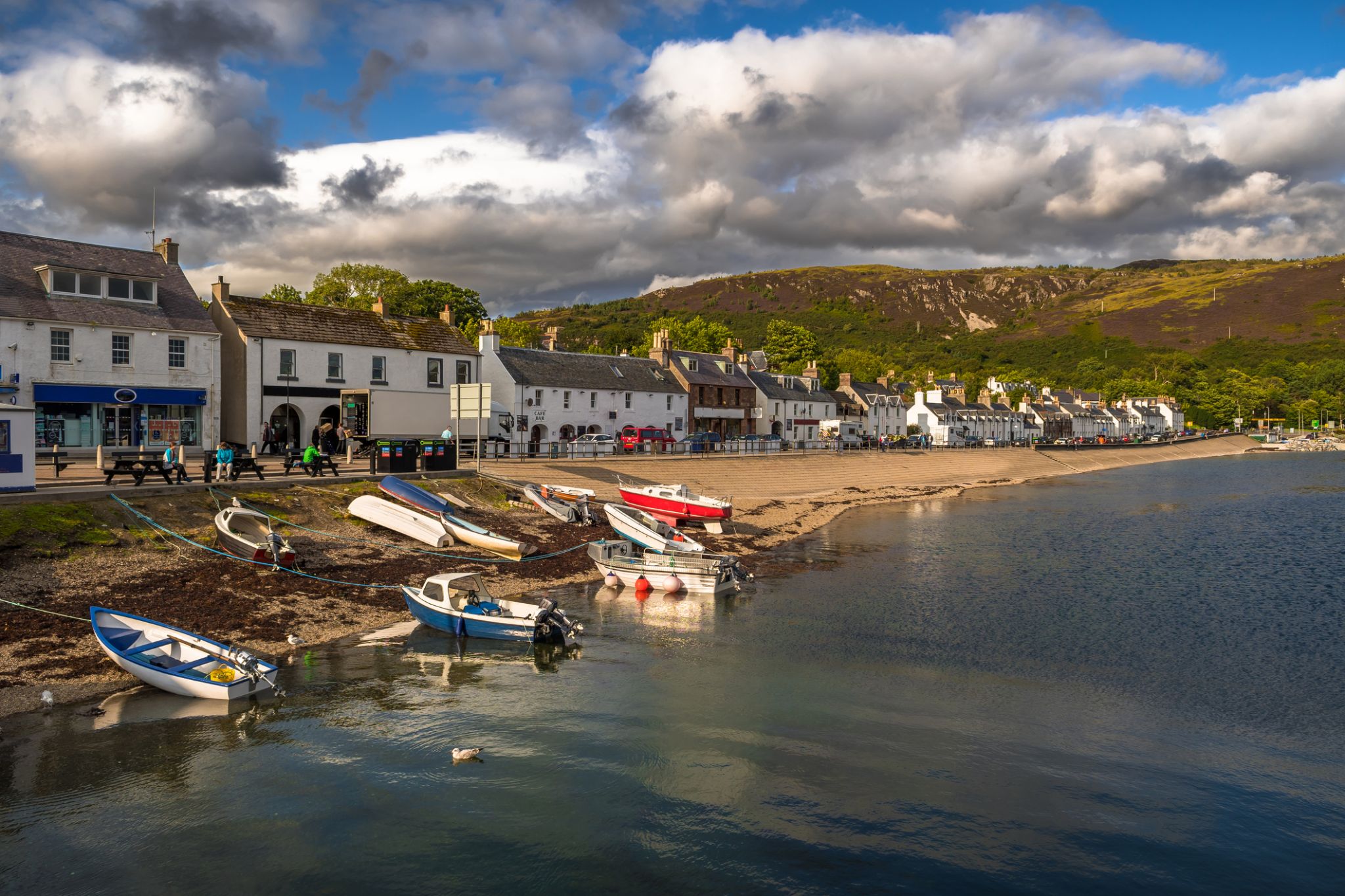

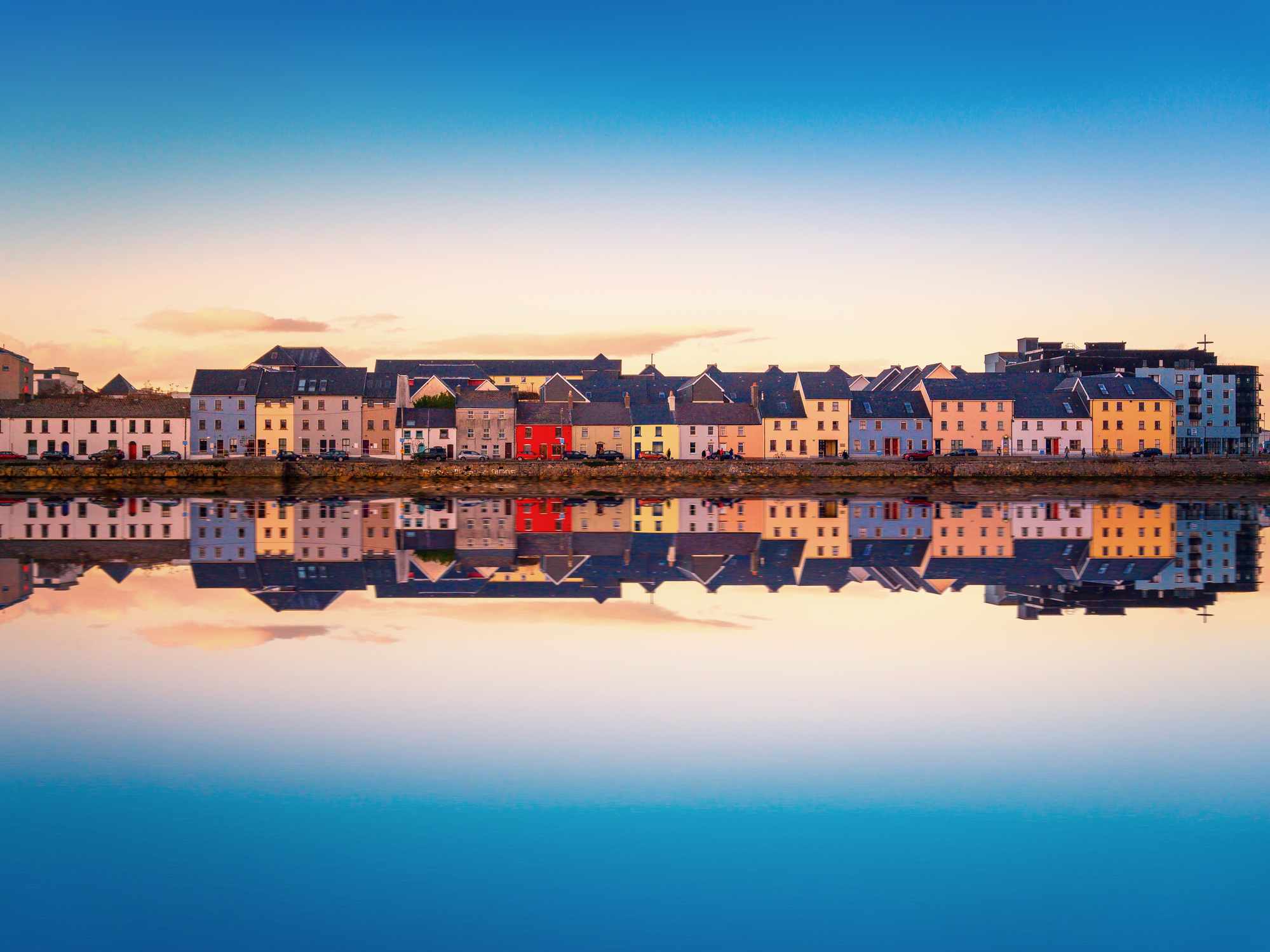
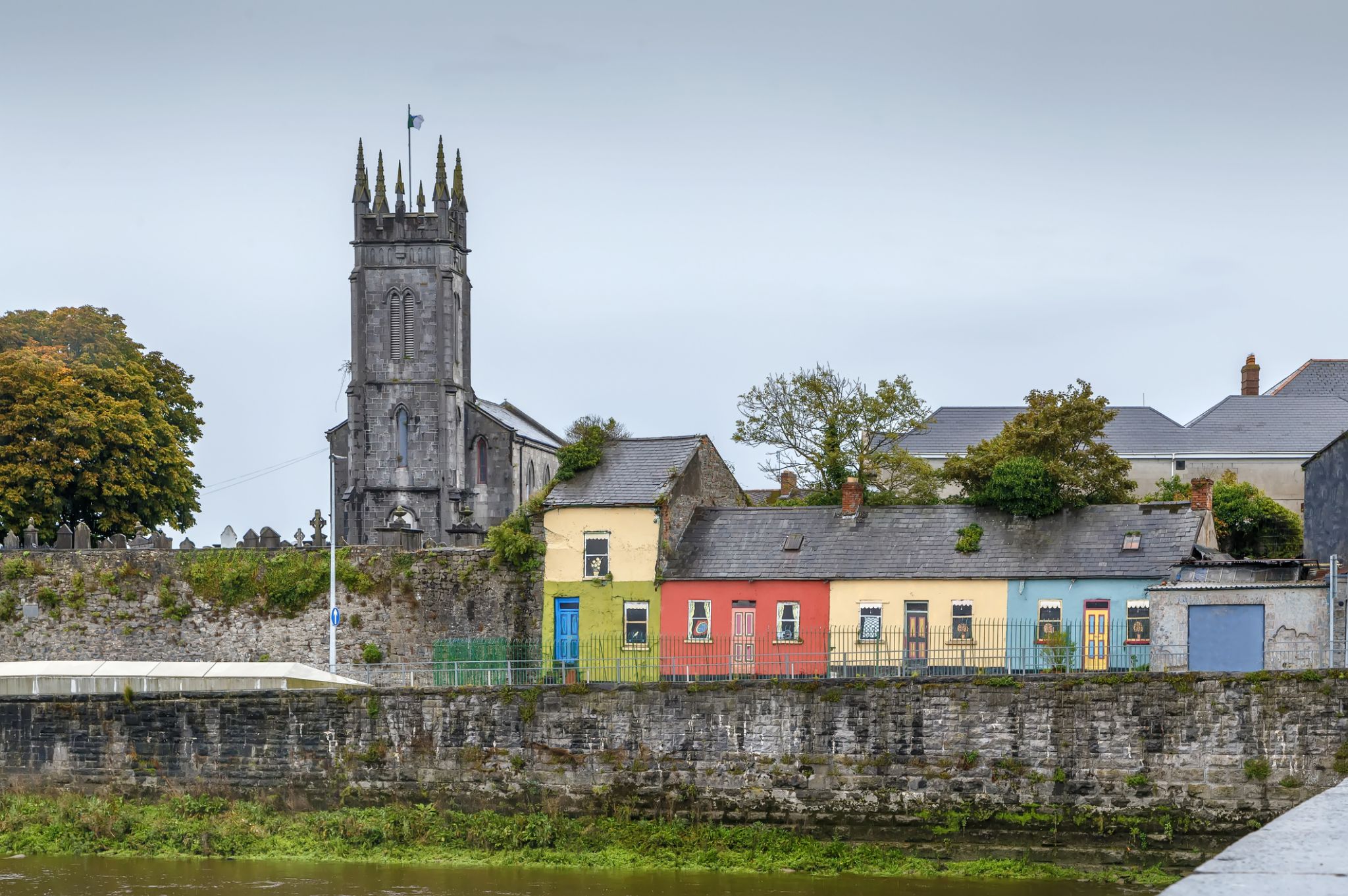


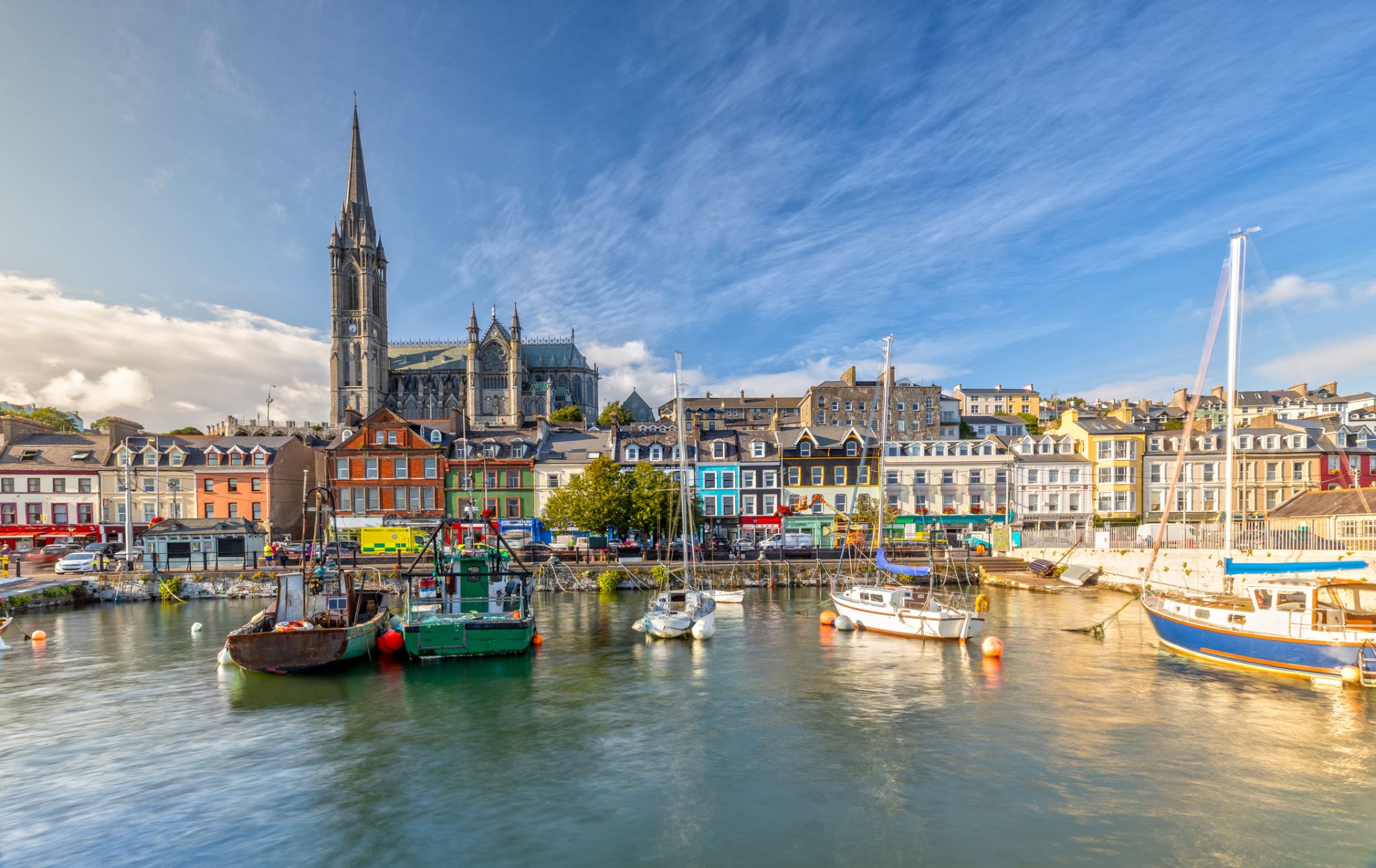
Cork is a city in south-west Ireland, in the province of Munster, which had a population of 125,657 in 2016.
The city is on the River Lee which splits into two channels at the western end and divides the city centre into islands. They reconverge at the eastern end where the quays and docks along the river banks lead outwards towards Lough Mahon and Cork Harbour, one of the largest natural harbours in the world.
Expanded by Viking invaders around 915, the city's charter was granted by Prince John, as Lord of Ireland, in 1185. Cork city was once fully walled, and the remnants of the old medieval town centre can be found around South and North Main streets.
The third largest city on the island of Ireland, the city's cognomen of "the rebel city" originates in its support for the Yorkist cause in the Wars of the Roses. Corkonians often refer to the city as "the real capital", a reference to its opposition to the Anglo-Irish Treaty in the Irish Civil War.





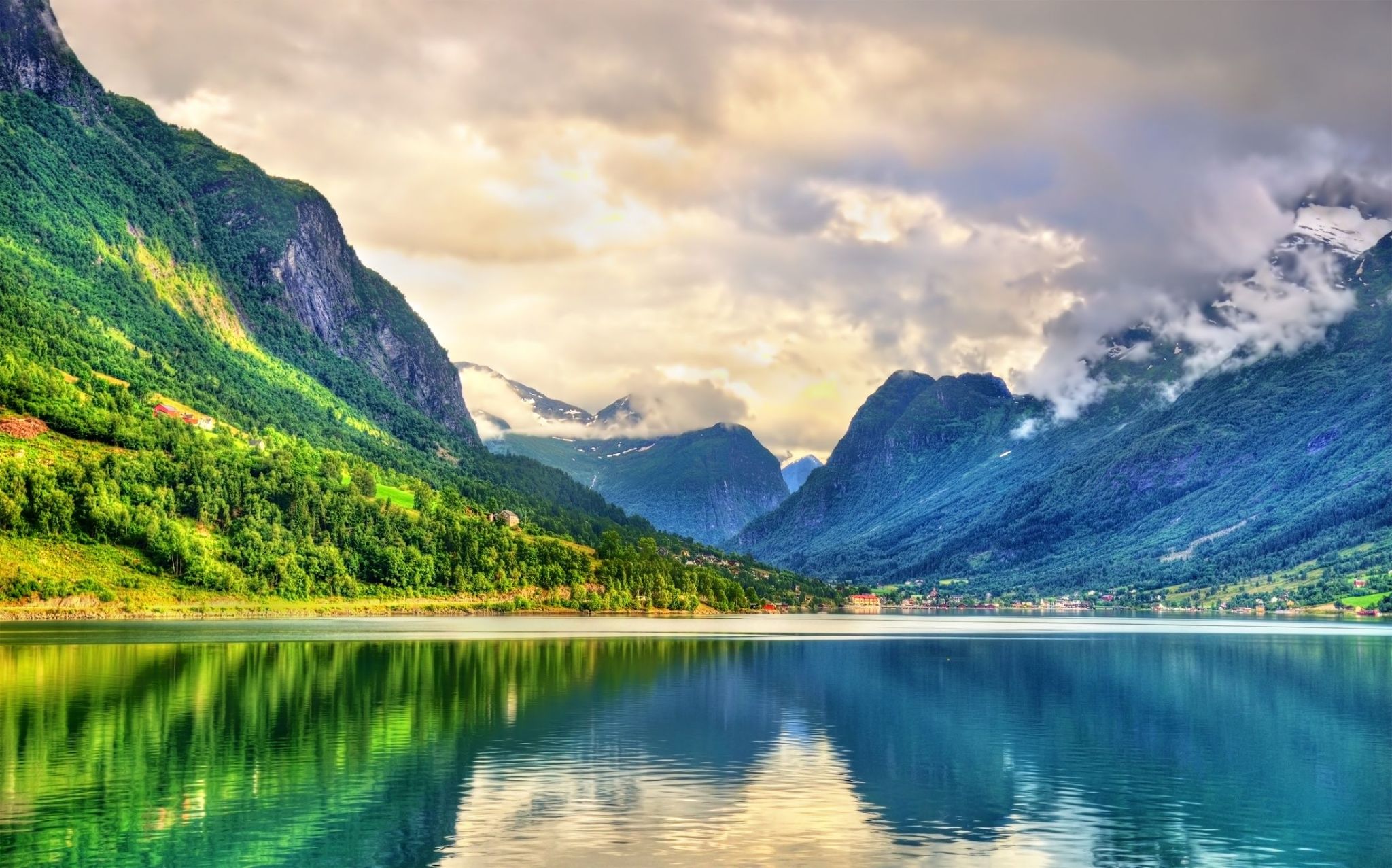
Nestled in the heart of Norway’s western coastline, Nordfjorden offers travelers a breathtaking blend of majestic fjords, serene villages, and rich cultural heritage. Stretching over 100 kilometers, this fjord is renowned for its dramatic cliffs and crystal-clear waters that invite visitors to explore by boat, kayak, or scenic hikes. Nature lovers will be captivated by the peaceful atmosphere and stunning vistas, while history enthusiasts can discover charming traditional farms and centuries-old settlements lining the fjord’s edges.
Visitors to Nordfjorden can experience a wide range of outdoor activities, from glacier walks on the nearby Jostedalsbreen to fishing in tranquil coves. The region is also famous for its vibrant local festivals and warm hospitality, making it an ideal destination for families and solo travelers alike. Whether you’re seeking adventure or relaxation, Nordfjorden promises an authentic Norwegian experience wrapped in natural beauty and cultural richness.
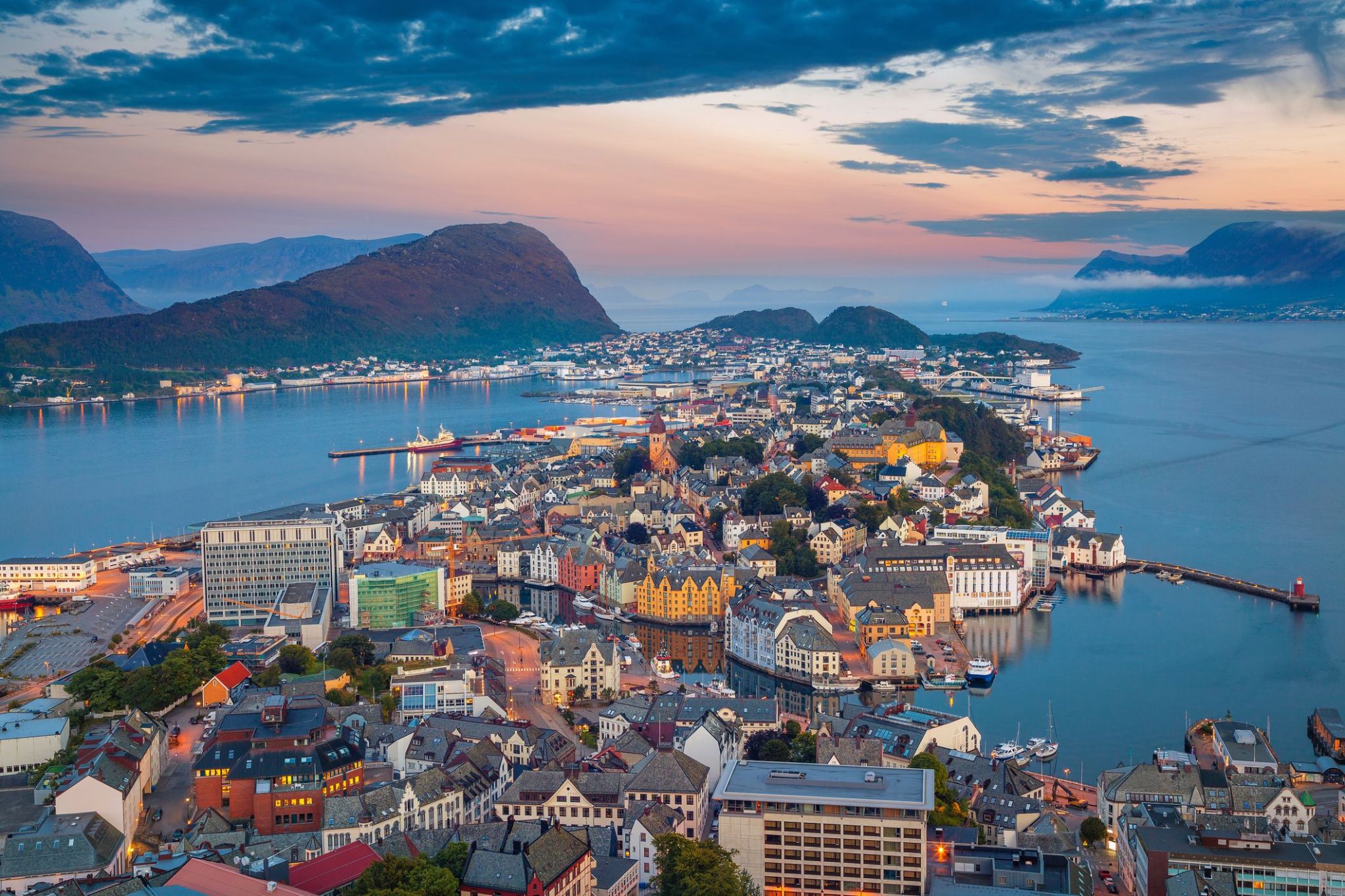
Nestled between majestic fjords and the open sea, Ålesund captivates visitors with its unique blend of natural beauty and distinctive architecture. Known for its stunning Art Nouveau style, rebuilt after a devastating fire in 1904, the town offers a charming atmosphere where colorful buildings line the waterfront, creating a picturesque setting unlike any other in Norway.
Adventurers and culture lovers alike find plenty to enjoy in Ålesund. From hiking up the viewpoint at Aksla Hill for panoramic views of the archipelago to exploring local museums and fresh seafood markets, this coastal town invites travelers to immerse themselves in Norway’s maritime heritage and breathtaking landscapes. Whether cruising the nearby fjords or wandering the narrow streets, every moment in Ålesund promises memorable discoveries.

Nestled between majestic fjords and the open sea, Ålesund captivates visitors with its unique blend of natural beauty and distinctive architecture. Known for its stunning Art Nouveau style, rebuilt after a devastating fire in 1904, the town offers a charming atmosphere where colorful buildings line the waterfront, creating a picturesque setting unlike any other in Norway.
Adventurers and culture lovers alike find plenty to enjoy in Ålesund. From hiking up the viewpoint at Aksla Hill for panoramic views of the archipelago to exploring local museums and fresh seafood markets, this coastal town invites travelers to immerse themselves in Norway’s maritime heritage and breathtaking landscapes. Whether cruising the nearby fjords or wandering the narrow streets, every moment in Ålesund promises memorable discoveries.
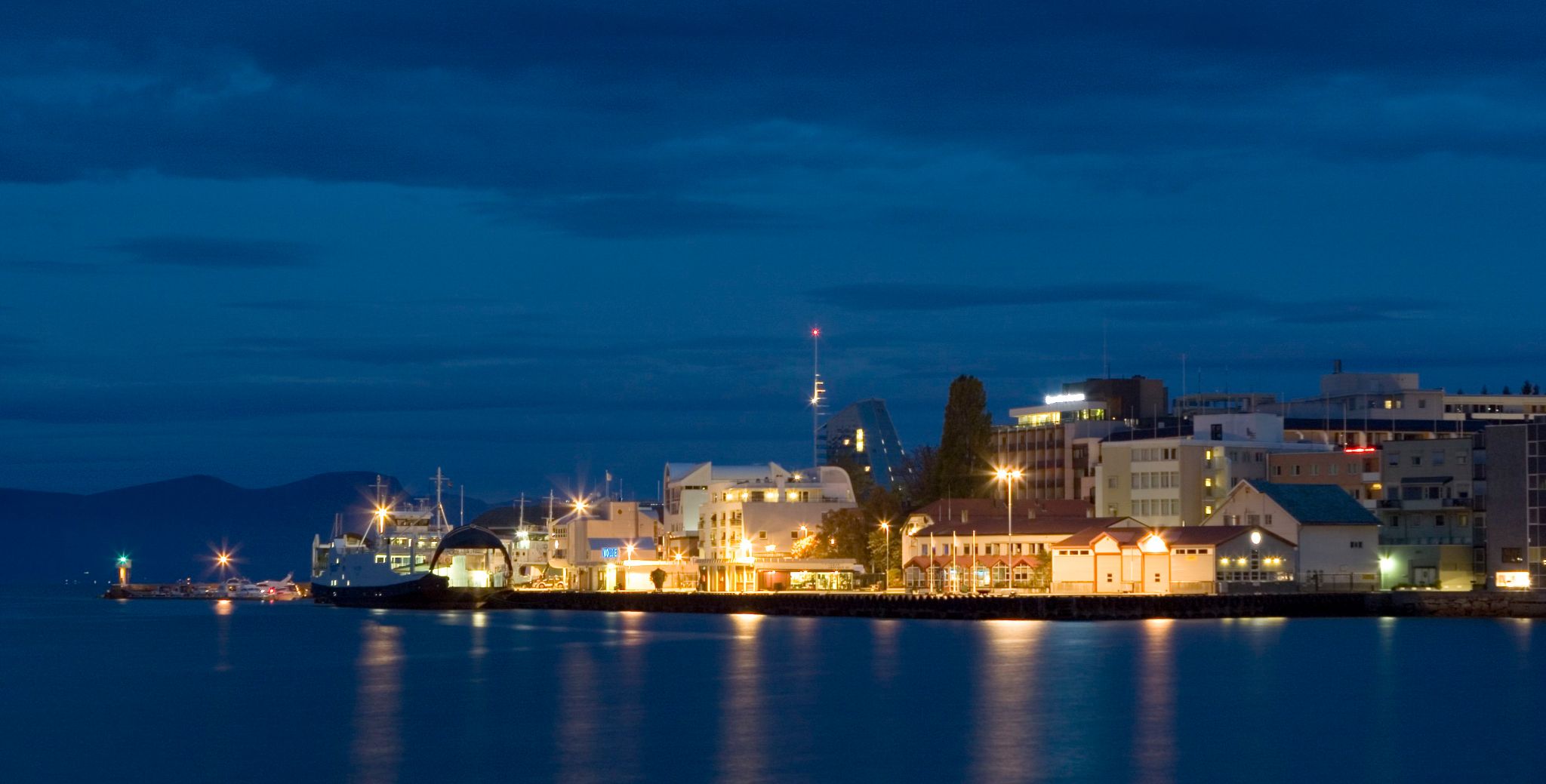
Molde is a picturesque town on the west coast of Norway, located on the shores of the Romsdalsfjord. Known for its stunning landscapes, the town is often referred to as the "City of Roses" due to the numerous rose gardens that adorn its streets and parks. Molde is surrounded by mountain peaks and green hills, creating a unique blend of mountain and sea views. One of the most famous views can be seen from the Vesterhorn Mountain, offering a panorama of 222 mountain peaks, forming an impressive landscape.
Molde is also famous for its cultural life and history. The town hosts an international jazz festival, attracting musicians and visitors from all over the world. It offers tourists numerous opportunities for outdoor activities, such as hiking on scenic trails, fishing, and fjord cruises. Historical landmarks, such as the Molde Church, along with its proximity to natural attractions like the Atlantic Road, make Molde an ideal place for those looking to combine nature-based relaxation with cultural and historical exploration.
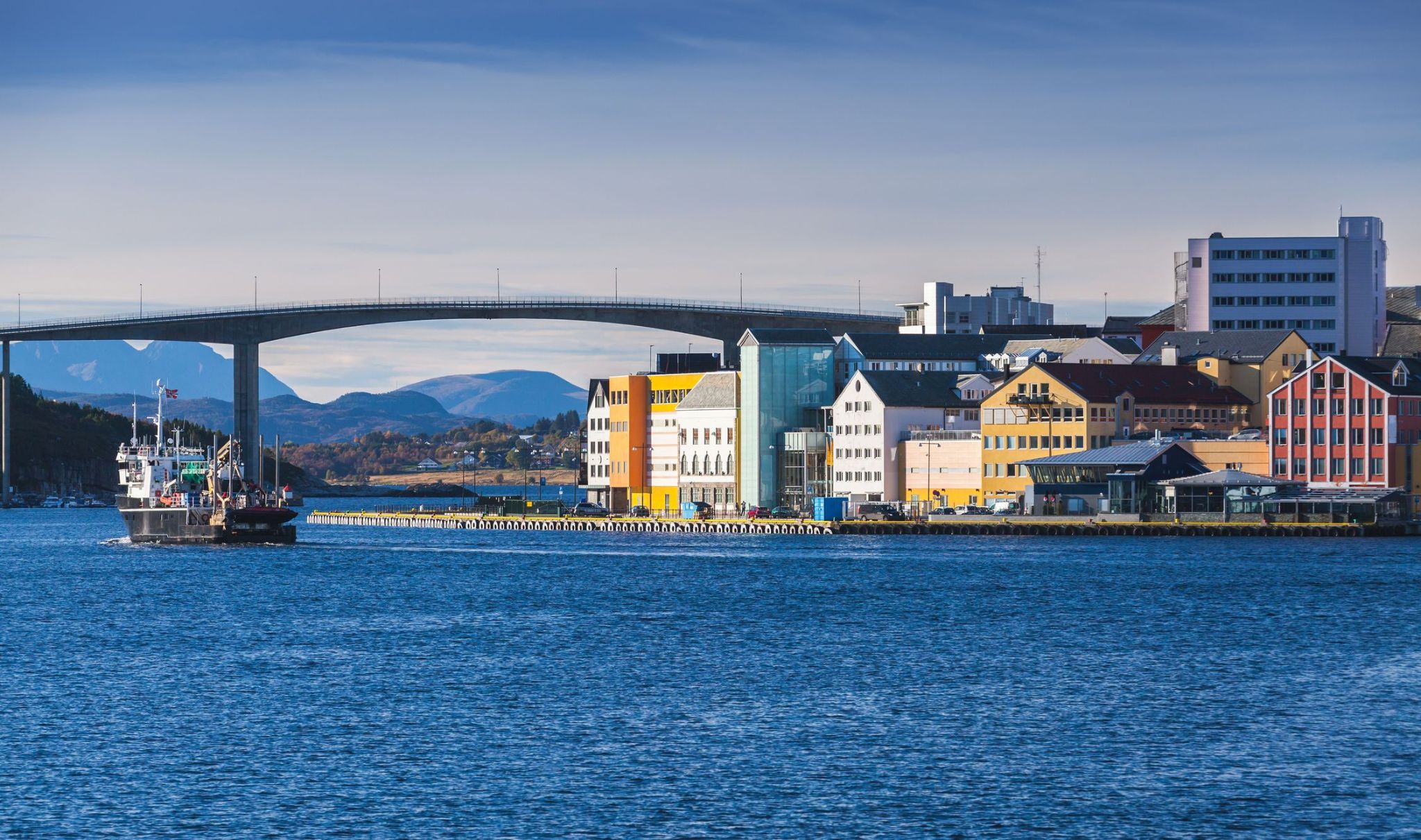
The southernmost coast of Norway invites you to discover the amazing city of Kristiansand. This charming town is surrounded by the sea on three sides. It is the fifth-largest city in the country, and although its center fits within a small area of just 1 km², Kristiansand has much to offer its visitors. It’s not only about the incredibly clean Norwegian air but also many other interesting attractions.
Among them is Norway’s largest zoo, home to 80 species of animals. A visit here will delight both children and adults. You can enjoy rides on carousels, laugh wholeheartedly at the circus, and take the whole family on a sea excursion or spend time together at a playground.
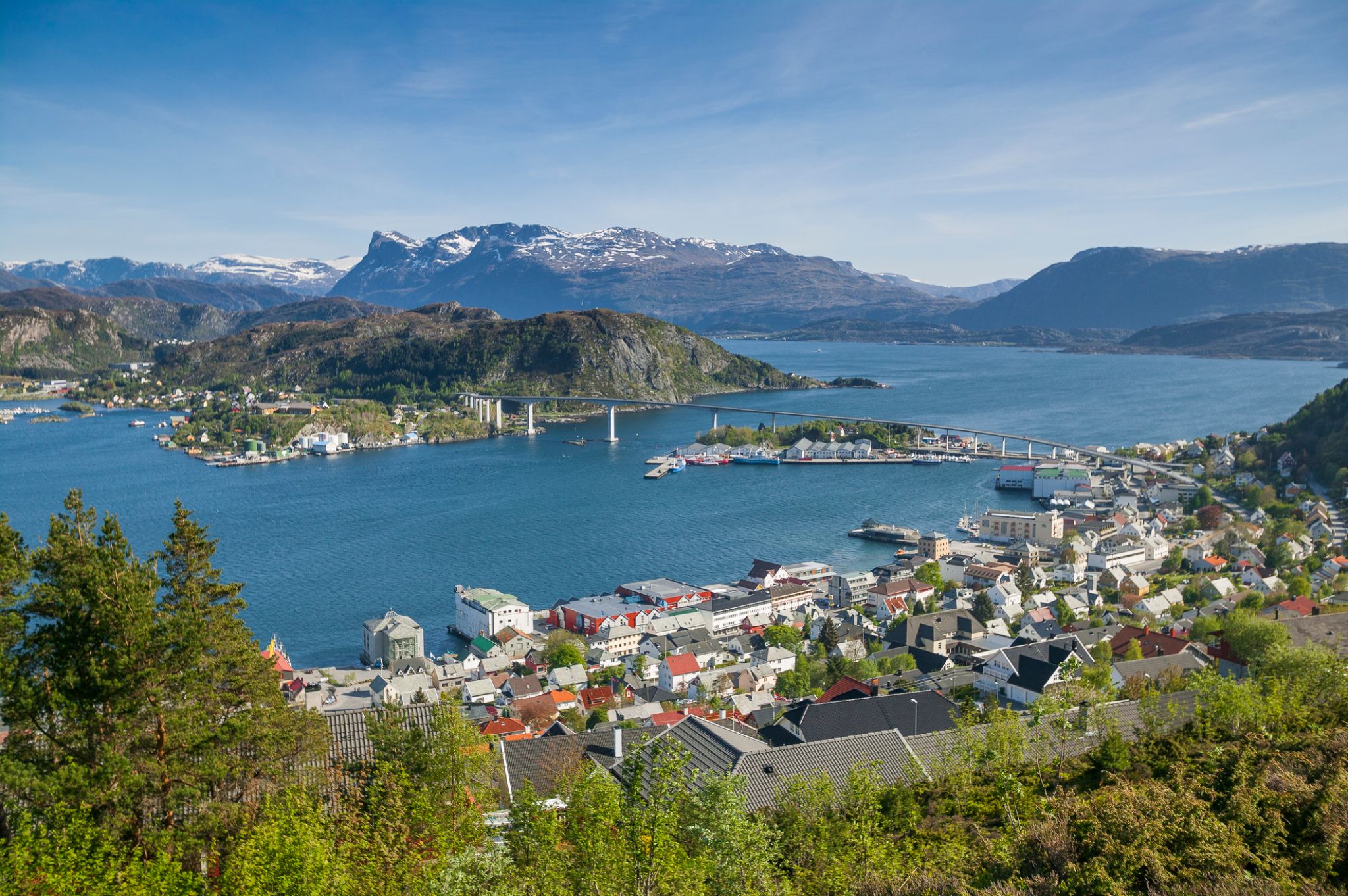
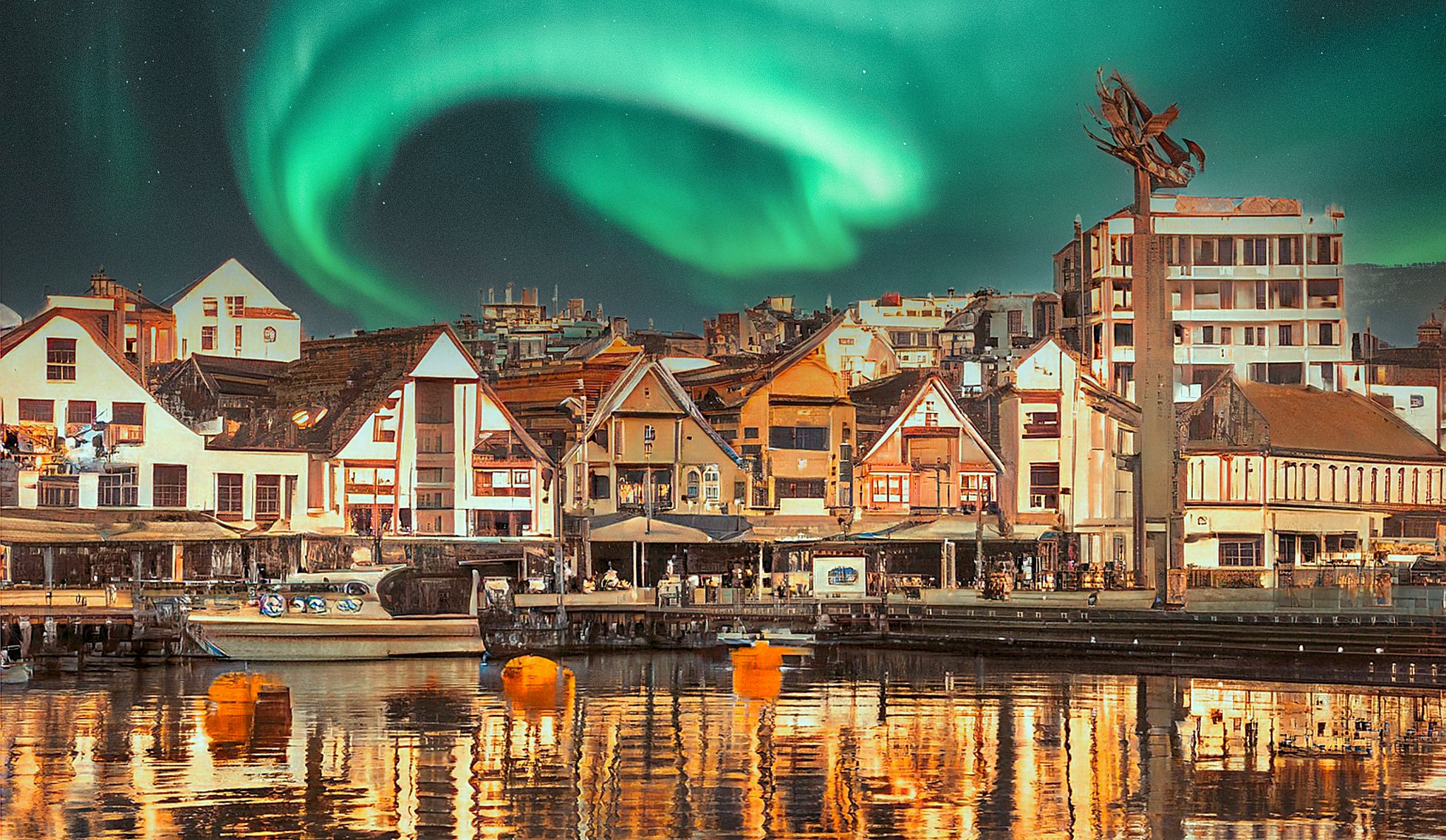
Stavanger is a city and municipality in Norway. It is the third largest city and metropolitan area in Norway (through conurbation with neighbouring Sandnes) and the administrative centre of Rogaland county. The municipality is the fourth most populous in Norway. Located on the Stavanger Peninsula in Southwest Norway, Stavanger counts its official founding year as 1125, the year the Stavanger Cathedral was completed. Stavanger's core is to a large degree 18th- and 19th-century wooden houses that are protected and considered part of the city's cultural heritage. This has caused the town centre and inner city to retain a small-town character with an unusually high ratio of detached houses, and has contributed significantly to spreading the city's population growth to outlying parts of Greater Stavanger.
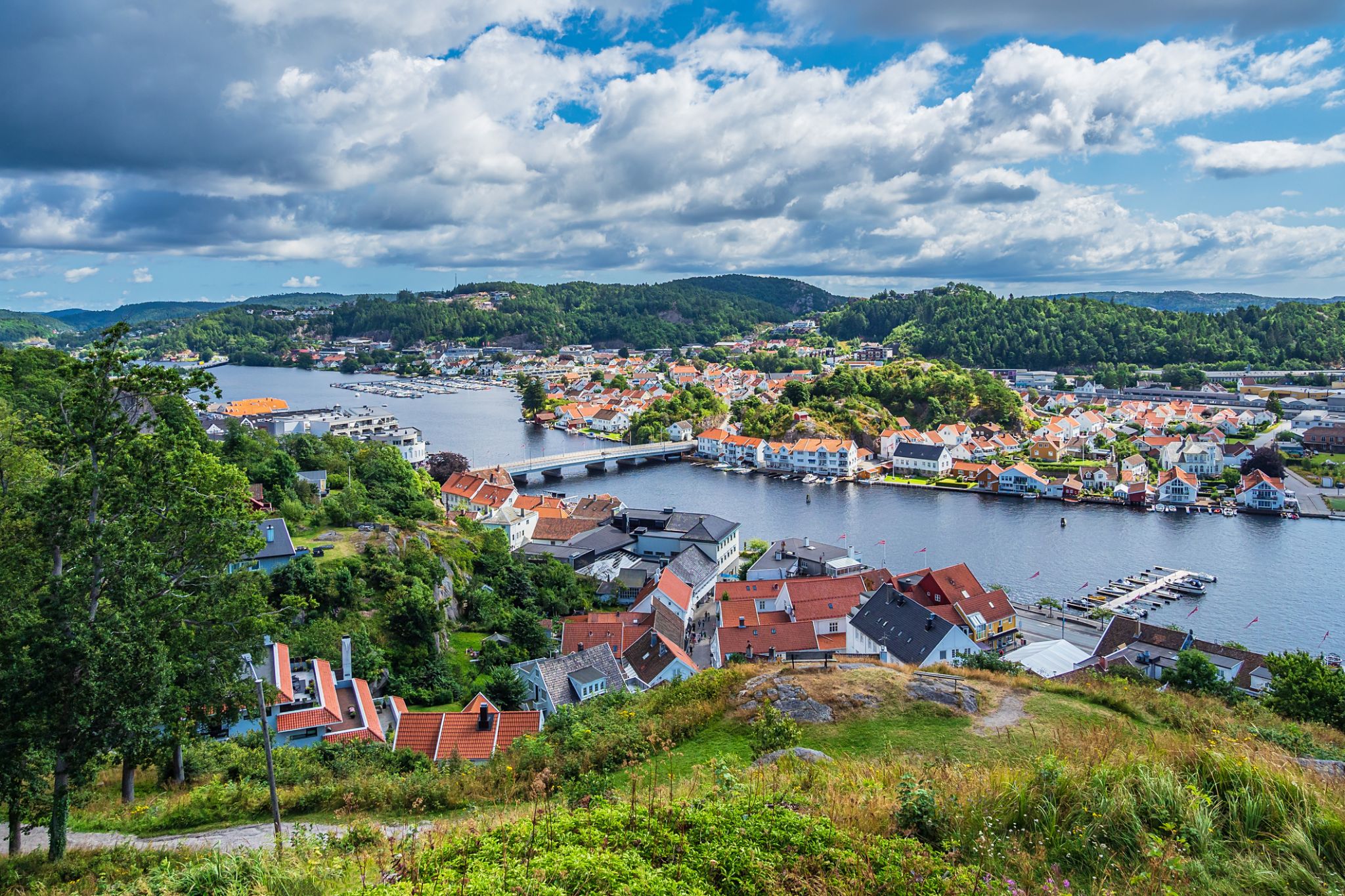
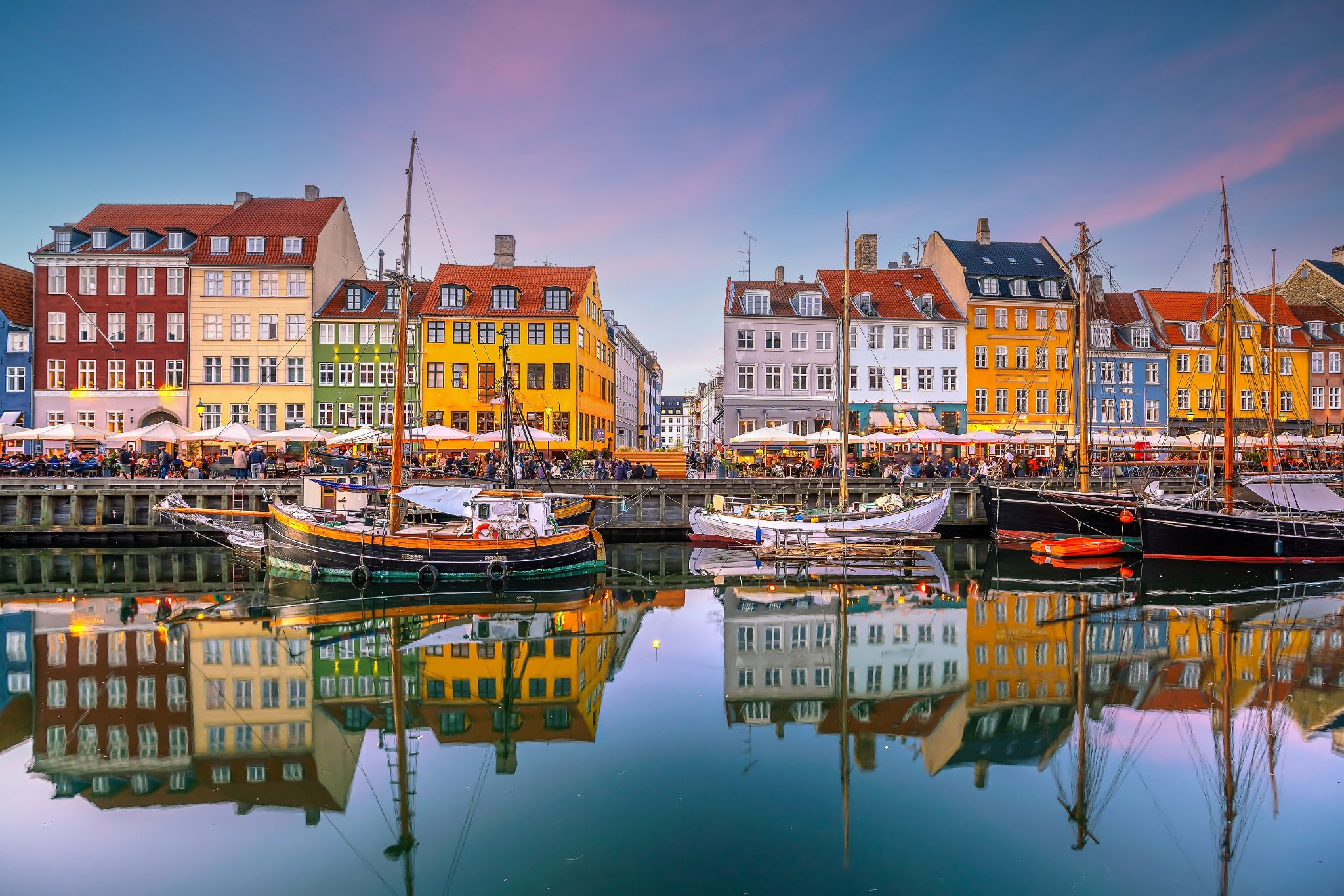
the capital and chief port of Denmark, a city that occupies the eastern part of Zealand and northern part of the island of Amager; population 518,574 (2009).

the capital and chief port of Denmark, a city that occupies the eastern part of Zealand and northern part of the island of Amager; population 518,574 (2009).
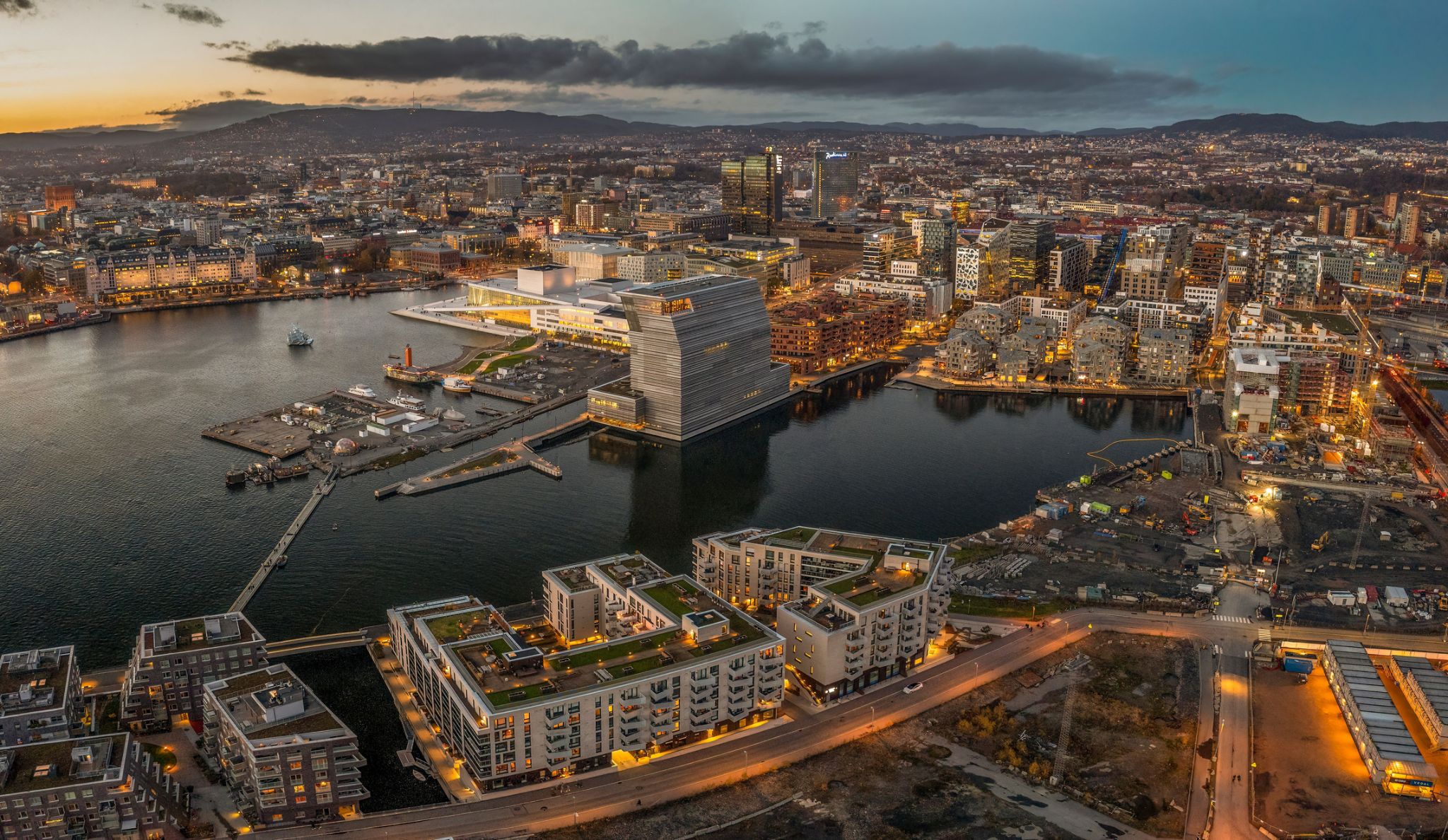
Oslo is the capital and most populous city of Norway. It constitutes both a county and a municipality. Founded in the year 1040 as Ánslo, and established as a trading place in 1048 by Harald Hardrada, the city was elevated to a bishopric in 1070 and a capital under Haakon V of Norway around 1300. Personal unions with Denmark from 1397 to 1523 and again from 1536 to 1814 reduced its influence, and with Sweden from 1814 to 1905 it functioned as a co-official capital. After being destroyed by a fire in 1624, during the reign of King Christian IV, a new city was built closer to Akershus Fortress and named Christiania in the king's honour. It was established as a municipality on 1 January 1838. The city's name was spelled Kristiania between 1877 and 1897 by state and municipal authorities. In 1925 the city was renamed Oslo.